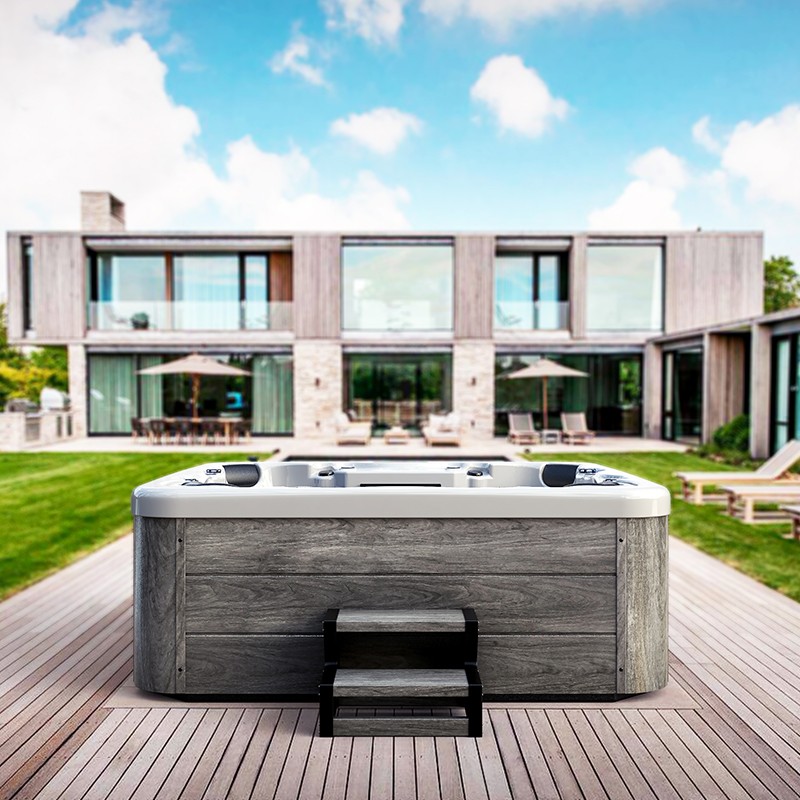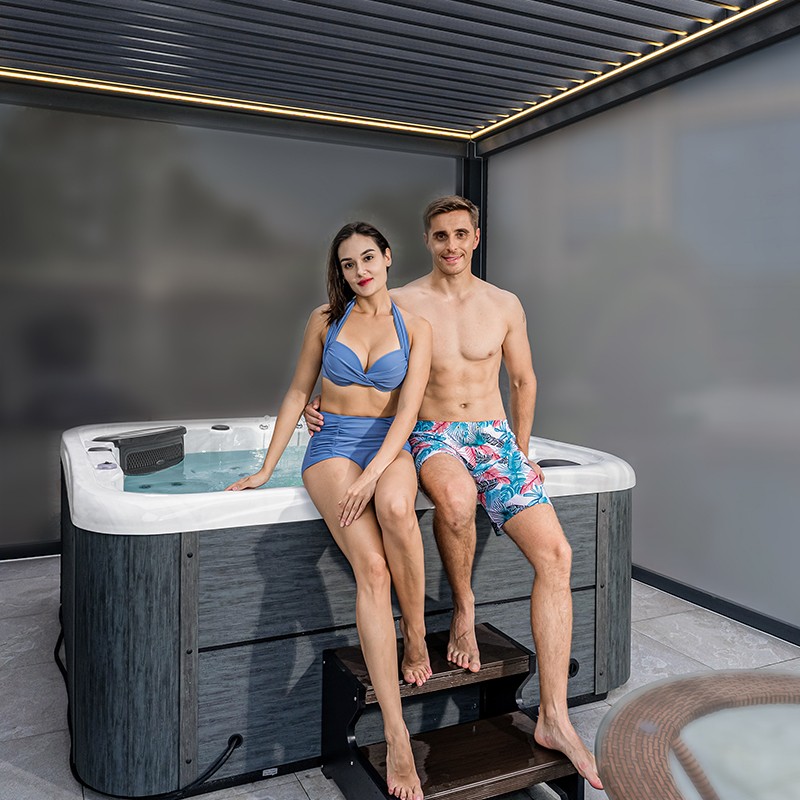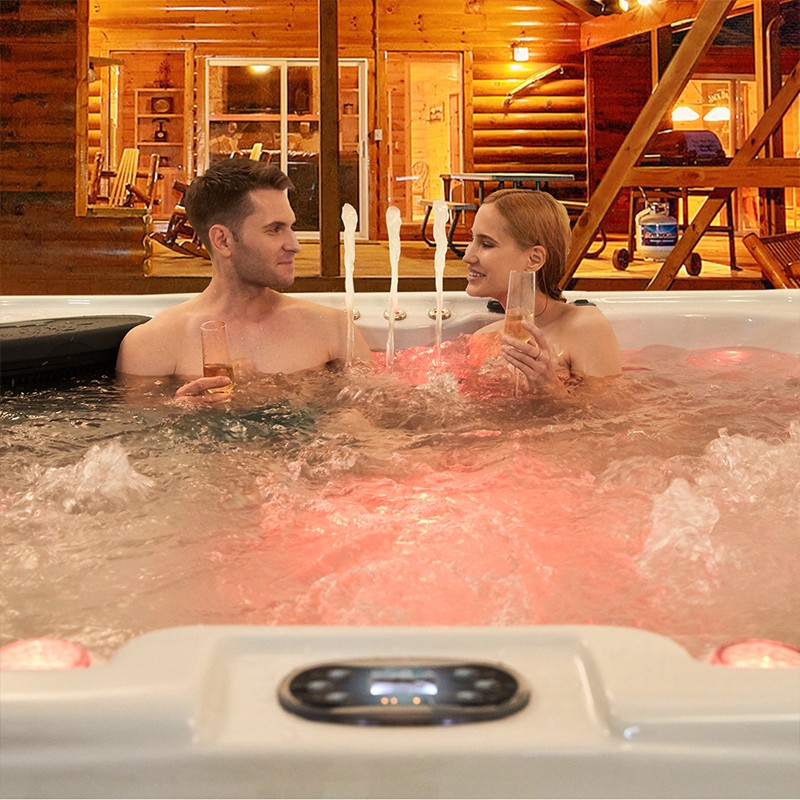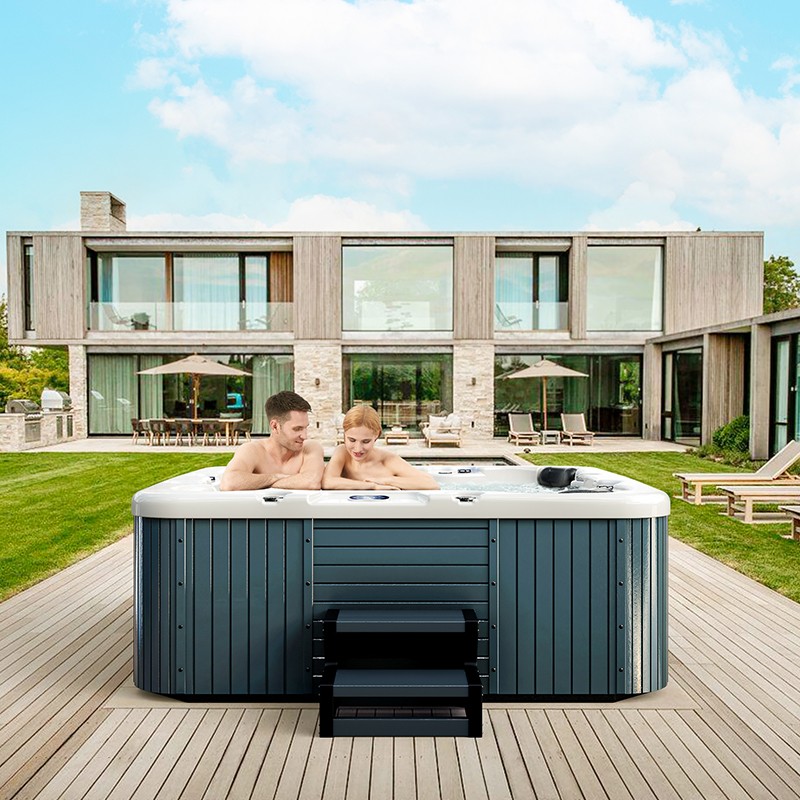
Why do I cough in a whirlpool spa hot tub?
2025-10-18 15:35A popular relaxation device in modern homes and leisure facilities, whirlpool spa hot tubs utilize circulating hot water and powerful jet systems to provide users with hydrotherapy benefits such as warm massage, muscle relaxation, and stress relief.
Some people experience an unexpected coughing reaction when using a whirlpool spa hot tub, especially upon entering or after prolonged soaking. This phenomenon is not an isolated incident but rather the result of a combination of environmental, physiological, chemical, and physical factors.
This article will comprehensively analyze the question, "Why do I cough in a whirlpool spa hot tub?" from the perspectives of air quality, water chemistry, physical steam reactions, physiological mechanisms, and usage, and offer targeted suggestions and explanations.

Coughing in a whirlpool spa hot tub: A common but often overlooked phenomenon
Coughing is a defensive reflex of the respiratory tract, intended to expel irritants, foreign matter, allergens, or excessive secretions from the airways. When someone coughs in a whirlpool spa hot tub, it often indicates that an external stimulus is affecting the airway mucosa or the lungs' sensory system.
While many users may not take this phenomenon seriously, even dismissing it as a temporary discomfort, frequent or persistent coughing may indicate operational or maintenance issues with the whirlpool spa hot tub. Understanding the underlying cause of this reaction can help improve user experience and prevent potential health risks from long-term exposure.
Airborne Irritants: The Invisible Harm of Volatile Byproducts
1. Chloramines and Other Disinfection Byproducts in Vapor Form
Whirlpool spa hot tubs often use chlorine or bromine-based chemical disinfectants to maintain water quality. These chemicals react with human sweat, urea, sebum, or other organic matter to produce byproducts such as chloramines.
When the water in a whirlpool spa hot tub is continuously heated and agitated by powerful jets, these byproducts are released into the air as aerosols or vapors. Once inhaled, these irritants can trigger the following reactions:
· Bronchoconstriction;
· Airway mucosal irritation;
· Respiratory inflammation;
· Coughing, sneezing, and even asthma-like symptoms.
Especially in poorly ventilated indoor whirlpools, spas, and hot tubs, these irritants are more likely to accumulate and become a major cause of coughing.
2. Side Effects of Auxiliary Disinfection Devices Such as Ozone and Ultraviolet Light
Some high-end whirlpools, spas, and hot tubs are equipped with ozone disinfection systems or UV-C lamps. While these can improve sterilization efficiency, improperly controlled ozone release can also irritate the human respiratory tract. Ozone itself is a strong oxidant, and inhaling high concentrations can cause:
· Shortness of breath;
· Chest tightness;
· Throat itching;
· Persistent dry cough.

Combined Effects of Water Temperature and Humidity: Altered Respiratory Physiology
1. High-temperature steam causes drying and irritation of the airway mucosa
The water temperature in whirlpools and spas is typically between 37 and 40°C, and the high-temperature surface of the water continuously produces large amounts of steam. While this humid and hot environment can be relaxing, it can also be a source of respiratory stress for some people with sensitive constitutions:
· High-temperature steam causes rapid evaporation of moisture from the airway mucosa;
· The small bronchi of the lungs become slightly dehydrated, increasing sensitivity;
· Temperature fluctuations stimulate the vagus nerve, triggering a cough reflex.
2. Excessive humidity inhibits airway ciliary clearance
Ciliary cells in the human respiratory system are responsible for clearing foreign matter and mucus. However, high humidity (such as in steam baths or whirlpool spa hot tubs) slows ciliary movement, hindering mucus drainage and causing minor blockages, which can trigger irritating coughs.
Aerosolization Mechanisms of Spray Systems: Potential Issues of Particle Transmission
1. Spa Jets Generate Fine Aerosols
The powerful jets in whirlpool spa hot tubs mix water and air before spraying them out, producing not only a massage effect but also micron-sized aerosol particles. These particles can remain suspended in the air above the tub, carrying the following:
· Chloramine and chlorine molecules;
· Residual organic pollutants;
· Particles of bacteria, fungi, or biofilm sloughs;
· Dissolved metal ions or limescale particles.
· Inhalation of these particles can irritate the alveoli and trigger a coughing reflex.
2. Dirty Systems Cause Biological Contamination
If a whirlpool spa hot tub is not properly maintained, bacterial biofilms, such as Legionella pneumophila, can grow on the inner walls of the jet system. These microorganisms are aerosolized by the water flow and inhaled into the lungs, causing severe respiratory reactions, the early symptoms of which are coughing.

Individual Physiological Differences: Sensitive People Are More Prone to Coughing
Not everyone will cough when using a whirlpool spa hot tub. Some people with special health conditions or underlying respiratory diseases are more likely to experience coughing.
1. Asthma or Allergies
· High sensitivity to chloramines, ozone, and other pollutants;
· Hot and humid environments induce bronchoconstriction;
· Susceptible airway irritation, causing a reflex cough.
2. People with chronic respiratory diseases
Such as chronic bronchitis, COPD (chronic obstructive pulmonary disease), and pulmonary fibrosis, exposure to high temperatures, high humidity, or irritating gases can impair airway regulation and make them more susceptible to coughing and respiratory discomfort.
Improper Maintenance: Problems Caused by Human Handling
In addition to environmental and individual factors, improper use and maintenance can also be the driving force behind coughing.
1. Excessive Use of Disinfectants
Some users, seeking enhanced cleaning effectiveness, add excessive amounts of chlorine or other shock agents during maintenance. This results in high concentrations of irritants remaining in the water during use, leading to frequent coughing.
2. Failure to Regularly Change the Water
If the water in a whirlpool spa hot tub is not changed for an extended period, even with the addition of disinfectant, it will be difficult to completely kill microorganisms or decompose organic matter, resulting in water contamination, poor steam quality, and respiratory reactions.
3. Neglecting to Clean the Spray System
Showerhead pipes are prone to accumulation of scale, mold, or grease. Once this is released by the impact of the water flow, it can be inhaled into the respiratory tract along with the steam.

How to avoid coughing in a whirlpool spa hot tub?
To minimize the risk of coughing, we recommend the following specific measures:
1. Maintain good ventilation
· Especially for indoor whirlpool spa hot tubs, always open windows or use the exhaust system when using it.
· Ensure there is no enclosing ceiling above the tub to allow steam to escape.
2. Control the amount of disinfectant used
· Add chlorine, bromine, and other agents strictly according to product instructions.
· Wait at least 8 hours after shock treatment to confirm that the residual chlorine concentration is within acceptable limits before use.
3. Regularly change the water and clean the system
· It is recommended to completely change the water every 1-2 months.
· Clean the jet system and pipes weekly to prevent microbial accumulation.
4. Set the water temperature appropriately
· Keep the water temperature around 37°C.
· Avoid prolonged soaking in extremely hot water (≥40°C).
5. Use with caution for sensitive individuals
· Those with asthma or bronchitis should consult a doctor in advance.
· When using for the first time, limit soaking time and observe your body's reaction.
How reliable are your delivery schedules?
Delivery reliability is a major concern for Purchasing teams. Our Company commits to a 30-day lead time after deposit for standard orders. This schedule allows Buyers to plan their logistics with confidence. Shipments are made from Huangpu port, China, where our Factory has established logistics channels.
We provide Sales Quotes including estimated shipping dates, Prices, and promotions. As a Manufacturer, we understand that timely delivery is as important as High quality and competitive Wholesale Pricing.
